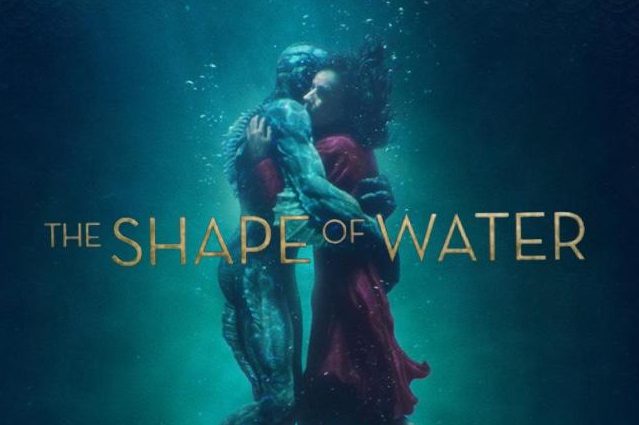Oscars 2018: del Toro’s Shape of Water is a dark fairytale
Graphic courtesy of Lilly Player
Elisa and Amphibian man embrace underwater
February 27, 2018
A ripple was made in the film industry last December. From the same person who directed box office hit films like Hellboy (2004), Crimson Peak (2015), and his most popular, Pan’s Labyrinth (El laberinto del fauno / 2006), comes another enthralling (yet controversial) hit film. Though critics have called it a drama or fantasy, the newest edition to motion picture director, Guillermo del Toro‘s, cinematic hall of fame can first be defined as an imaginative fairy tale. The Shape or Water was released to theaters in December of 2017, and has since been nominated for 13 Oscars, including Best picture. But does the film really deserve all of this praise? The short answer is: Yes.
Every aspect of this movie is utterly stunning, even the opening scene. The film starts out with a shot of the main character Elisa’s apartment completely sumberged in water. The lighting alone in this scene makes it a sheer spectacle to observe. From there, Elisa wakes up, and the movie follows her to cleaning job at a large, high security government laboratory. In this lab is where she first meets Amphibian Man, and where the course of her whole life changes in the blink of an eye. Connected through their sprit and through their flaws, the two begin to form a deep bond… at least until Elisa hears that the new director, Mr.Strickland, plans to kill him for research. This is where everything hits the fan, so to speak, and where the plot begins to accelerate.
Now, although this fishy romance may seem odd to the average moviegoer (and to the average sane person), somehow del Toro uses his cinematic magic to make this story not actually that strange. In fact, by the end of the movie I’d almost forgotten that Amphibian Man, well, was an amphiban. The love between the two is so strong that it transcends physical bounds and almost seems more human than that of any other romance-type movie I’ve ever seen.
Call me crazy but, according to Guillermo del Toro, that seems to be exactly the point. In an interview about the movie, del Toro said that the whole goal of the movie was “[not to] reduce a person to one word.” AKA, don’t judge a book by it’s cover. This theme is portrayed throughout the movie by Elisa and countless other characters rising above expections in the most spectacular and unexpected of ways. He spreads this message along with the similar moral, “The antidote to hate is understanding.” Not only does this movie look pretty, but it teaches a great lesson in the process.













